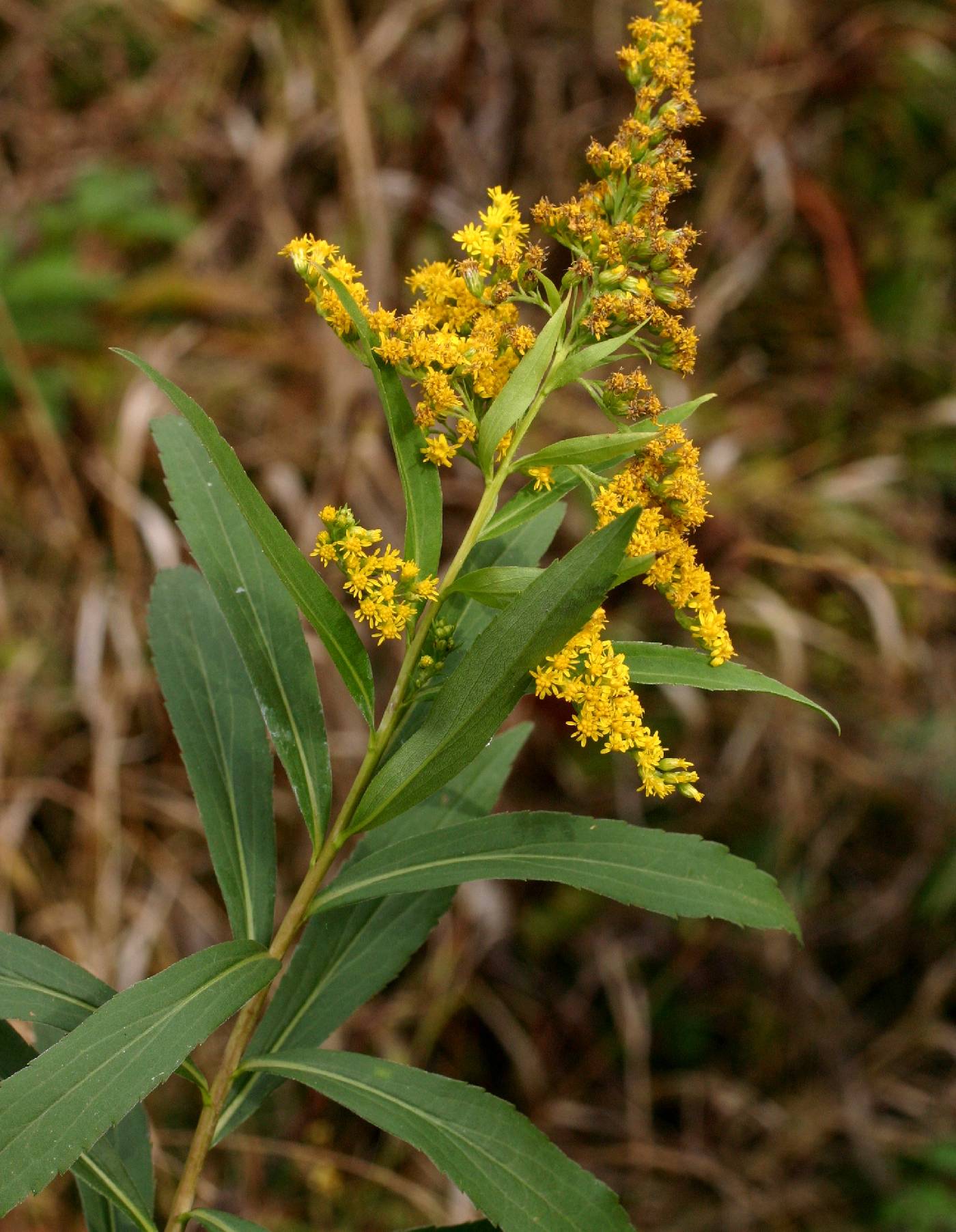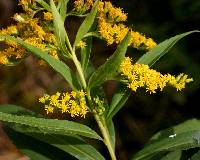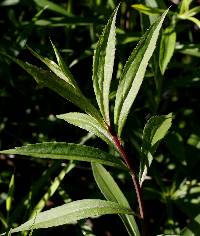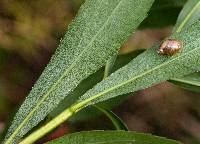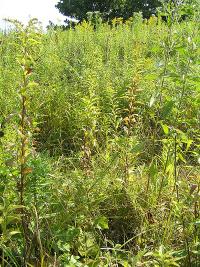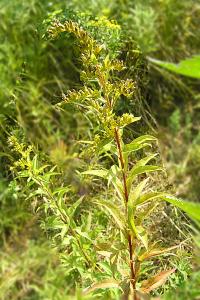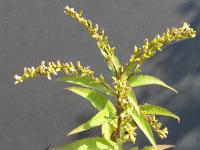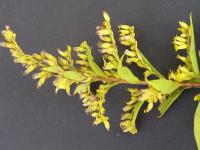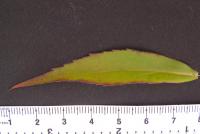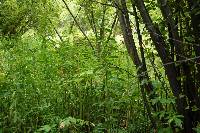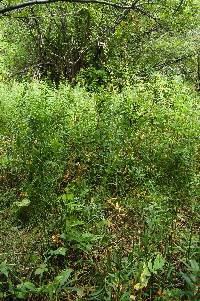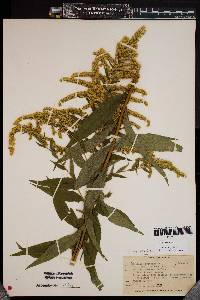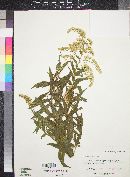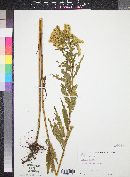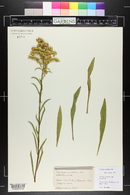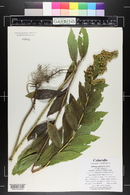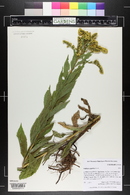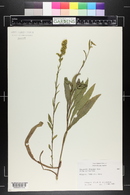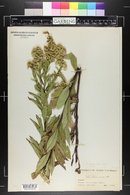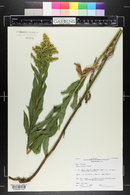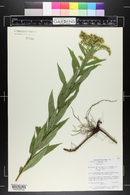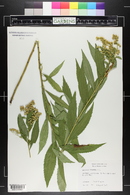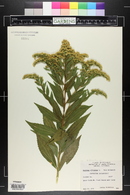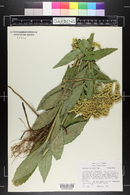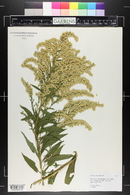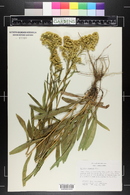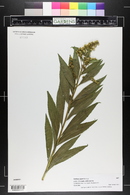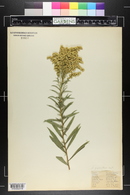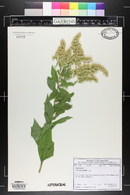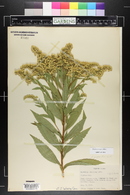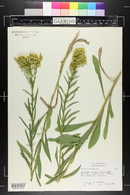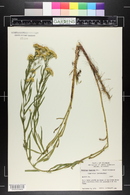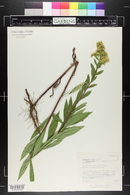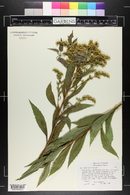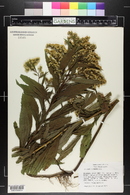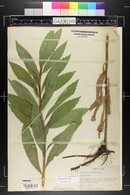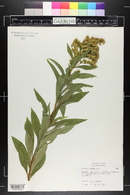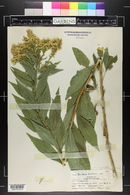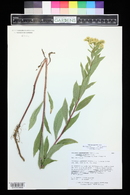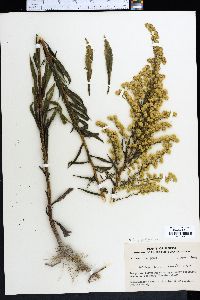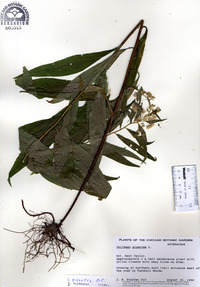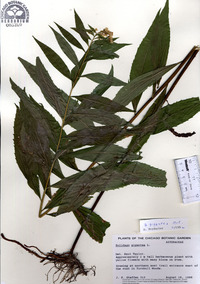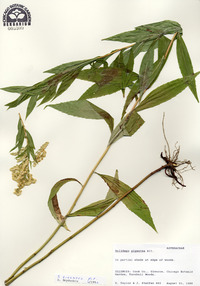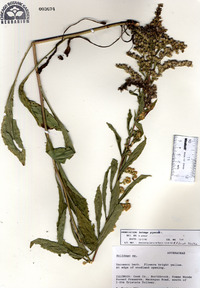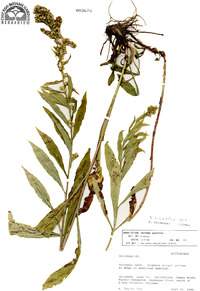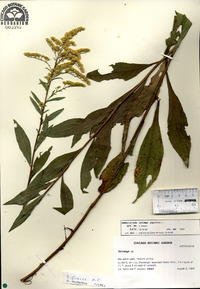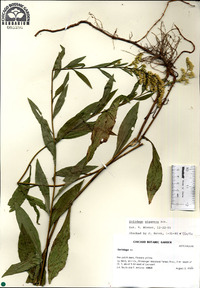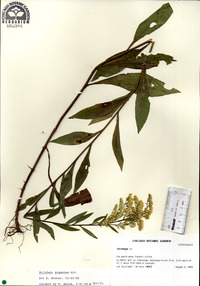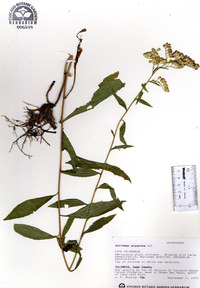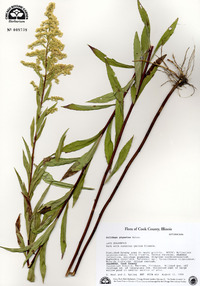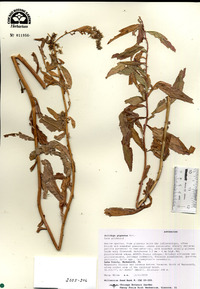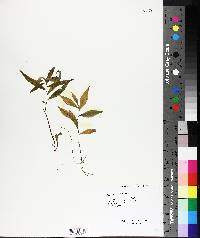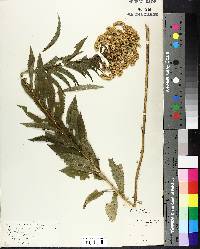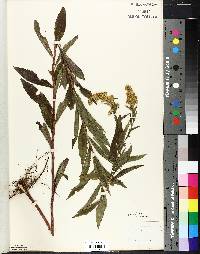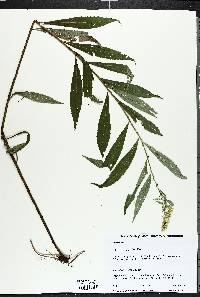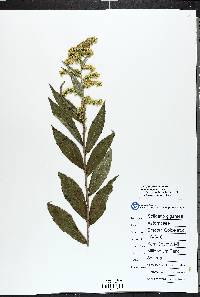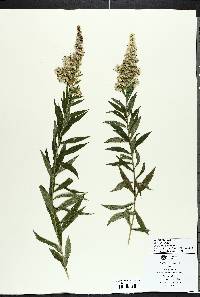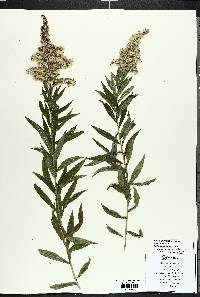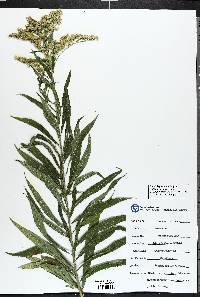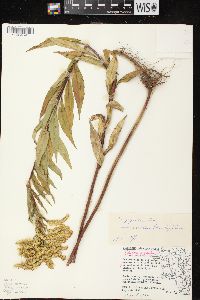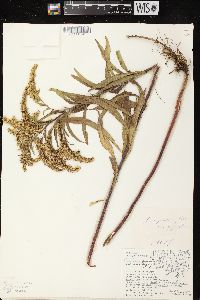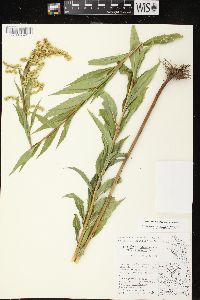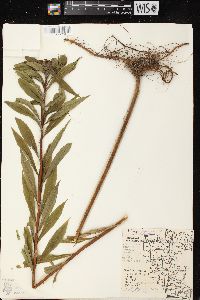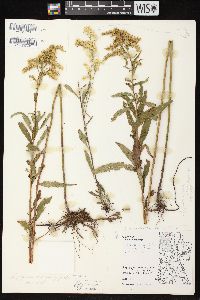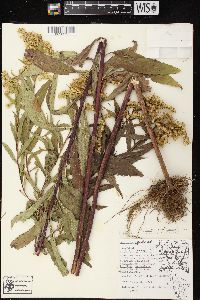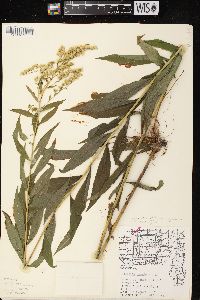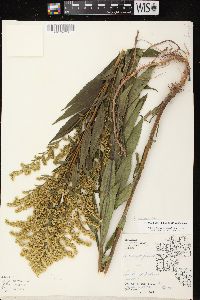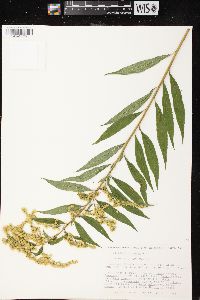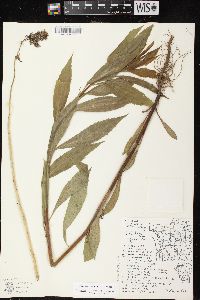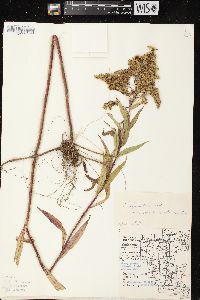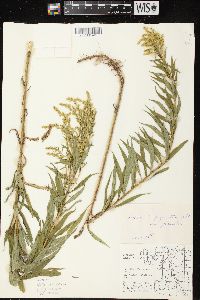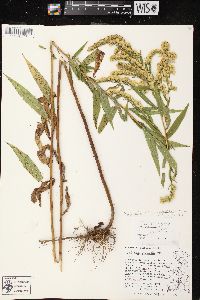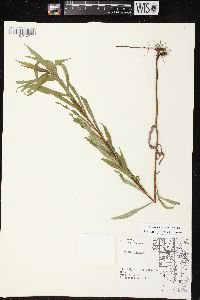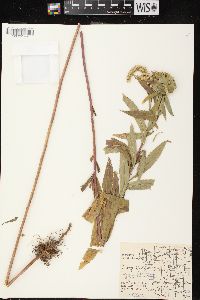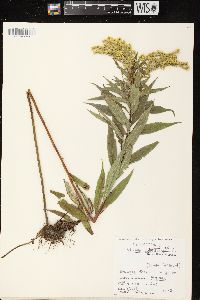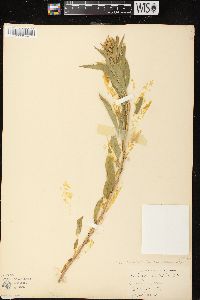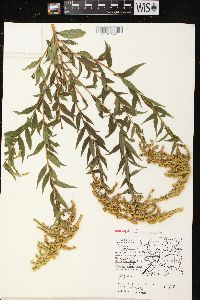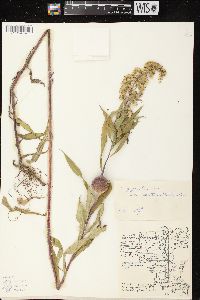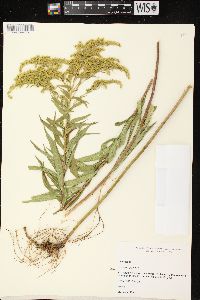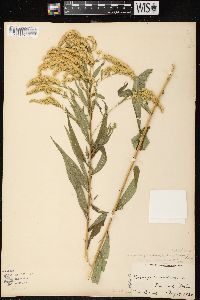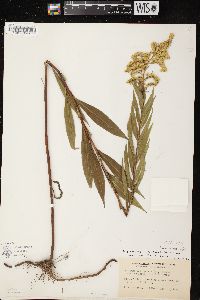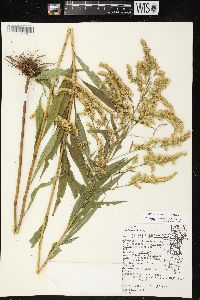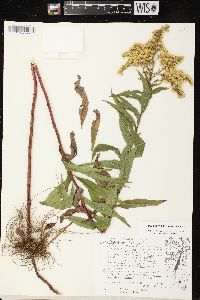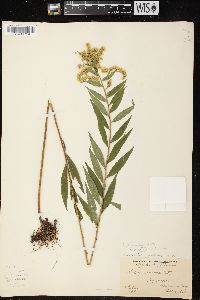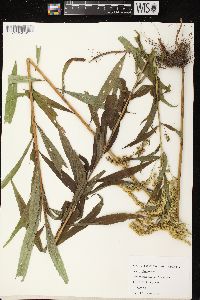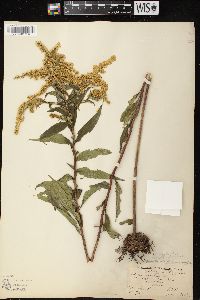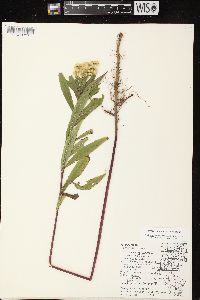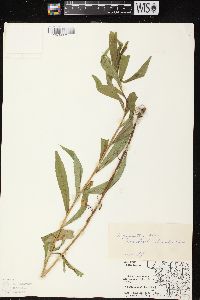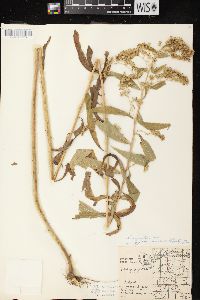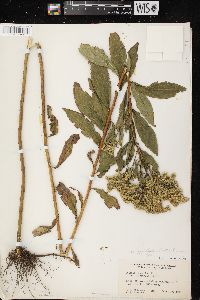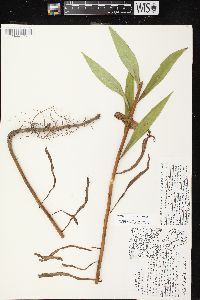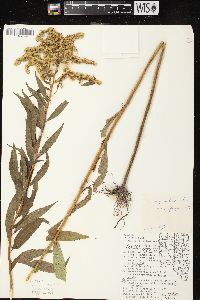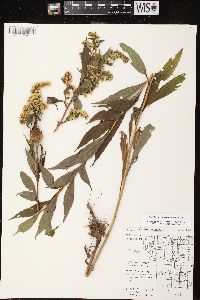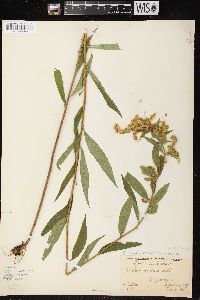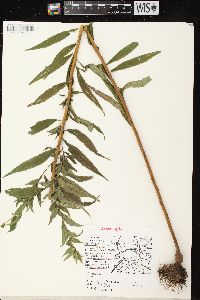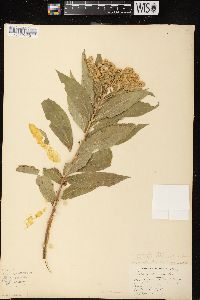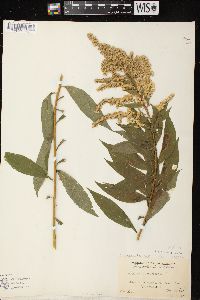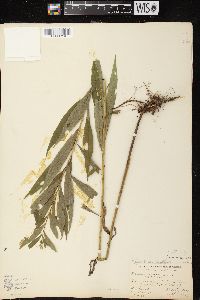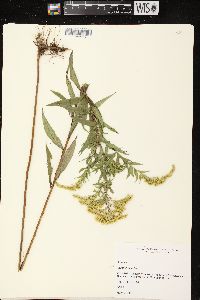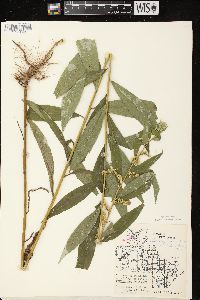Solidago gigantea
|
|
|
|
Family: Asteraceae
Late Goldenrod, more...giant goldenrod, smooth goldenrod, tall goldenrod
[Aster latissimifolius var. serotinus Kuntze, moreSolidago gigantea subsp. serotina (Kuntze) McNeill, Solidago gigantea var. leiophylla Fernald, Solidago gigantea var. pitcheri (Nutt.) Shinners, Solidago gigantea var. serotina (Kuntze) Cronquist, Solidago gigantea var. shinnersii , Solidago pitcheri Nutt., Solidago serotina Ait., Solidago serotina var. gigantea (Aiton) A.Gray, Solidago serotinoides Á.Löve & D.Löve, Solidago somesii , Solidago x leiophallax] |
Plants 50-200 cm (solitary or clustered); rhizomes short- to long-creeping. Stems 1-20+ or clustered, erect, glabrous or sparsely strigose in arrays, sometimes glaucous. Leaves: basal 0; proximal cauline usually withering by flowering time, sessile, lanceolate, 91-97 × 10-14 mm, margins sharply serrate, 3-nerved, apices acuminate, abaxial faces pilose on nerves or glabrous; mid to distal cauline similar, 57-76 × 0.7-1.2 cm, largest toward mid stem, decreasing distally. Heads 40-600 , secund, in broadly secund, pyramidal paniculiform arrays, rarely rhombic or club-shaped, proximal branches divergent, recurved, glabrous-glabrate or strigose, sometimes glaucous. Peduncles 1.5-3 mm, sparsely to densely strigillose; bracteoles 0-2, linear-lanceolate. Involucres campanulate, (2-)2.5-4(-5) mm. Phyllaries in 3-4 series, unequal, acute; outer lanceolate, inner linear-lanceolate (hexa-ploids from far west can have minute stipitate glands, especially near base of outer phyllaries and peduncle bracts). Ray florets (7-)9-15(-24) (conspicuous); laminae 1-3 × (0.1-)0.2-0.4 mm. Disc florets (4-)7-12(-17); corollas (2.5-)3-3.5(-4.5) mm, lobes 0.6-1(-1.4) mm. Cypselae 1.3-1.5 mm, sparsely strigose; pappi 2-2.5 mm. 2n =18, 36, 54. Flowering Aug-Sep(-Oct). Usually at least seasonally moister soils, flood plains, ditches, depressions, open woods, and thickets, moist depressions in grasslands and parklands on Great Plains; 0-1500+ m; Alta. , Man., N.B., N.S., Ont., P.E.I., Que., Sask.; Ala., Ark., Colo., Conn., Del., Fla., Ga., Ill., Ind., Iowa, Kans., Ky., La., Maine, Md., Mass., Mich., Minn., Miss., Mo., Mont., Nebr., N.H., N.J., N.Y., N.C., N.Dak., Ohio, Okla., Pa., R.I., S.C., S.Dak., Tenn., Tex., Vt., Va., W.Va., Wis., Wyo.; introduced in Mexico. Solidago gigantea is usually the least hairy species of the S. canadensis complex. The stems may be somewhat glaucous and the array is usually somewhat more open than in S. canadensis and S. altissima, and less leafy than S. lepida. Its blooming season begins and ends earlier than S. altissima in eastern North America. The species is diploid, mostly east of the Appalachian Mountains, tetraploid throughout the eastern forest area, and hexa-ploid on the prairies. The broader-leaved hexaploids on the prairies have been treated as S. shinnersii; G. H. Morton (1984) indicated that the differences are not diagnostic. Reports of hexaploids in the mountains from Alberta, Idaho, Oregon, Washington, and northwestern Wyoming all have minute stipitate glands on the phyllaries, peduncle bracts, and sometimes the distalmost leaves; such plants belong in S. lepida, as do plants from British Columbia. Stems sometimes have 1-2 elongate insect galls near the base (S. Heard, pers. comm.). Although reported from much of Florida, specimens were seen only from Liberty County; all other collections are S. leavenworthii.
Similar to no. 40 [Solidago canadensis L.], but puberulent only in the infl, the stem glaucous; lvs glabrous or with a line of hairs along the 3 main veins beneath, the larger ones 6-17 נ1-4.5 cm; infl paniculiform, with recurved-secund branches; invol 2.5-4 mm, its bracts mostly firmer, blunter, and greener than in no. 40; rays (8-)10-17; disk-fls 6-12; 2n=18, 36, 54. Moist open places; N.S. and Que. to Ga., w. to B.C. and N.M. (S. serotina) Gleason, Henry A. & Cronquist, Arthur J. 1991. Manual of vascular plants of northeastern United States and adjacent Canada. lxxv + 910 pp. ©The New York Botanical Garden. All rights reserved. Used by permission. From Flora of Indiana (1940) by Charles C. Deam [Deam has two varieties of S. gigantea: the leaves of var. gigantea are glabrous or somewhat scabrous above and pubescent at least on the midrib beneath; leaves of var. leiophylla are glabrous on both surfaces. The pubescent variety is] frequent to infrequent in the lake area and infrequent to local south of it. The habitat is the same as that of the [glabrous] variety although it is usually found in wetter places. [The glabrous variety is] frequent in the glaciated area but less frequent south of it. It prefers a moist rich soil and is usually found in low places about lakes and along streams. It is sometimes found in marshes and rarely in dry woods. …… Indiana Coefficient of Conservatism: C = 4 Wetland Indicator Status: FACW |
|
|
|

